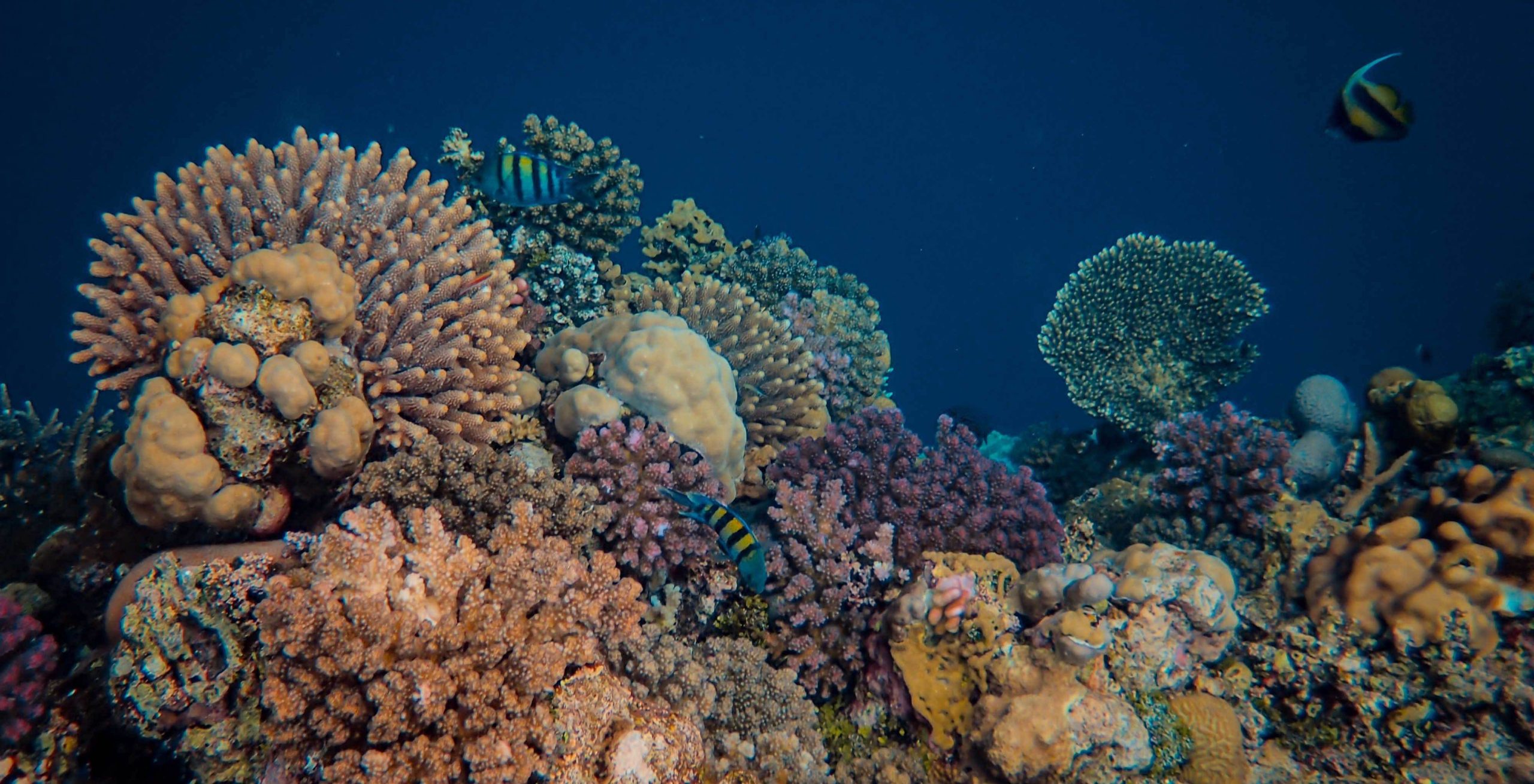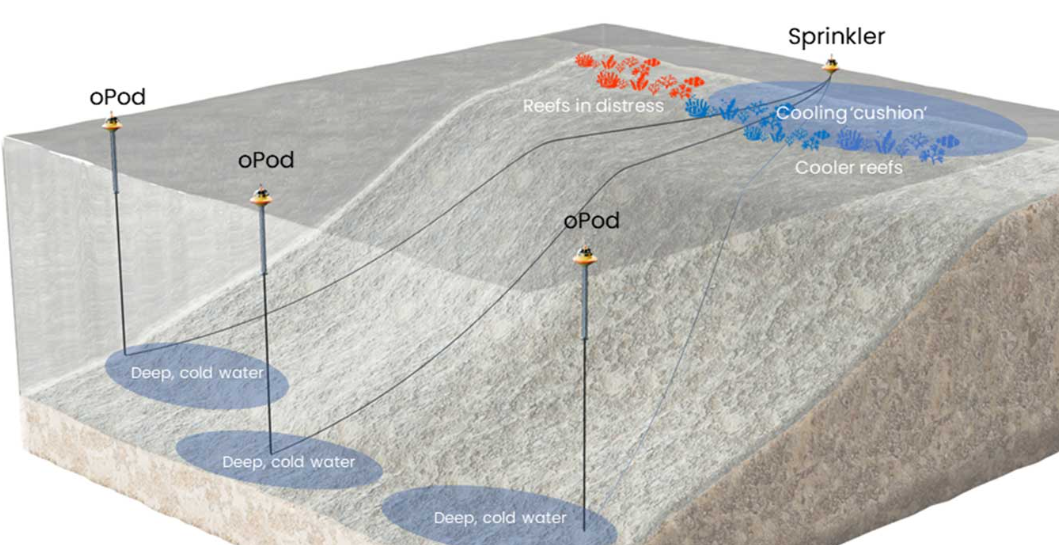After identifying 200 companies across the globe with the potential to accelerate coral restoration efforts, CORDAP has released a database designed to bridge a persistent gap in the field: the lack of interconnection between conservationists and the private sector.
The world’s corals and reefs are at risk of functional extinction due to human activity. Despite a global consensus that action is urgently needed, current conservation and restoration efforts remain mostly small-scale. Tapping into the expertise, facilities and infrastructure of industrial partners could significantly accelerate coral R&D, delivering innovative ways to protect and restore reefs.
CORDAP’s new report, “Engaging Industry in Coral Restoration: A Global Landscape”, aims to assist coral practitioners by providing a list of companies that have the potential to help them boost local coral conservation efforts through technological transfer. These companies, while not coral-based, may have designed tools and products that accelerate coral conservation and restoration, or may provide novel, yet affordable, approaches for conserving corals or restoring reefs across large spatial scales. The report is the first of its kind in the coral restoration field, and a long needed resource for coral restoration practitioners.

How can industry help solve the global coral crisis?
When dealing with a global, multifaceted challenge like coral conservation, it is important to look for innovative solutions, harnessing diverse expertise and alternative technologies. Beyond coral-centric businesses, industries such as fish aquaculture, agriculture and construction all use transferable technologies that could be used in conservation projects or to drive R&D.
Established providers have existing access to industrial-scale facilities and capabilities, helping coral practitioners increase the speed and scale of their ambitions. Partnering with business players to adapt existing products can also make projects cheaper, a vital consideration for coral research and conservation communities, many of which are operating with limited budgets.
Equally, there are benefits for businesses working with coral conservation and restoration programs. Startups can trial developing technologies on existing coral projects, and collaborations can help demonstrate business commitments to social responsibility.

Construction site. Photo by Rodolfo Quirós / Pexels.
The Top 200
CORDAP’s industry mapping report analysed 200 companies, distributed across five distinct categories—marine informatics, aquaculture, biotechnology, environmental engineering, and environmental mitigation. The companies included span five continents. Twenty-eight percent are from the USA, with the remaining two-thirds distributed across 34 countries, including the Dominican Republic, the Maldives, India, and Uruguay.
From tech giants monitoring reef health with AI to material scientists creating sustainable reef-building materials, the potential for working with industry to accelerate coral solutions is huge.

Photo by Thijs van der Weide / Pexels.
Case study: Using dental scanners for coral monitoring
Align Technology is a medical device company from the United States that develops intra-oral scanners for creating digital 3D representations of patient mouths. The device can also scan internal teeth structure, mapping shade and shape to monitor changes over time.
Similar to human teeth, coral skeletons are made up of calcium carbonate. Scanning corals using such non-invasive imaging devices could increase the efficiency of coral reef monitoring. In fact, Align Technology’s scanners have already been trialled by marine biologists, capturing 3D coral images of larvae and juveniles in land-based nurseries. The process, which using traditional methods typically takes around four hours, was completed in under 3 minutes. If developed to suit underwater use, it could help assess coral health by detecting structural changes within coral skeletons or tissues.

A dentist inspecting the patient’s mouth. Photo by Cedric Fauntleroy / Pexels.
Case study: Floating robots vs. marine heatwaves
Blue Carbon is a start-up that designs ‘aquabots’, currently used to provide oxygenated water for fish farms via remote ocean pumps. A single large pod can recirculate 17 Olympic-sized swimming pools in an hour.
If properly adapted and scaled up, these robots could be used to cool down the marine environment during marine heatwaves. Floating wave, solar and wind-powered ‘pods’ could pump cooler water from the ocean floor up to the surface, replicating natural vertical water circulation patterns. ‘Sprinklers’ near the surface then disperse a protective cushion of cool water over target areas, including heat-stressed reefs.

Tethered oPods collect deep, cold water bringing it directly to an oPod ‘sprinkler’ at the reef, where it’s distributed. Photo by Blue Carbon.
Conservationists and the private sector unite
By mapping industries with the potential to assist coral conservation, and kicking off a global database of these prospective partners, this report is breaking new ground. Its global coverage ensures that entities working on coral conservation across the globe are aware of private sector partners that may have the tools or technology needed to upscale their coral conservation projects. This will be key to overcoming challenges frequently associated with language barriers or local-specific conditions.
Collaborating with industry and building cross-sector partnerships will allow coral practitioners to implement affordable conservation and restoration solutions on a scale that would not be possible alone.
“The importance of engaging industry cannot be overstated. The private sector has a unique ability to drive innovation, bring solutions to market, and achieve the efficiencies needed to make new technologies both scalable and affordable”, said David Mead, Chair of CORDAP’s Scientific Advisory Committee. “We must engage the ingenuity, resources, and capabilities of industry. We need to bring their eyes and thinking to the challenge and unlock options that scientists have not yet considered.”
CORDAP’s goal is to expand this initial research into a global resource that will help link coral scientists and practitioners to relevant industries, improving access to technologies that would boost global conservation efforts and help create a more secure future for reefs and corals.
Download the Industry mapping report to find out more about the 200 companies with power to accelerate coral conservation and restoration worldwide.
